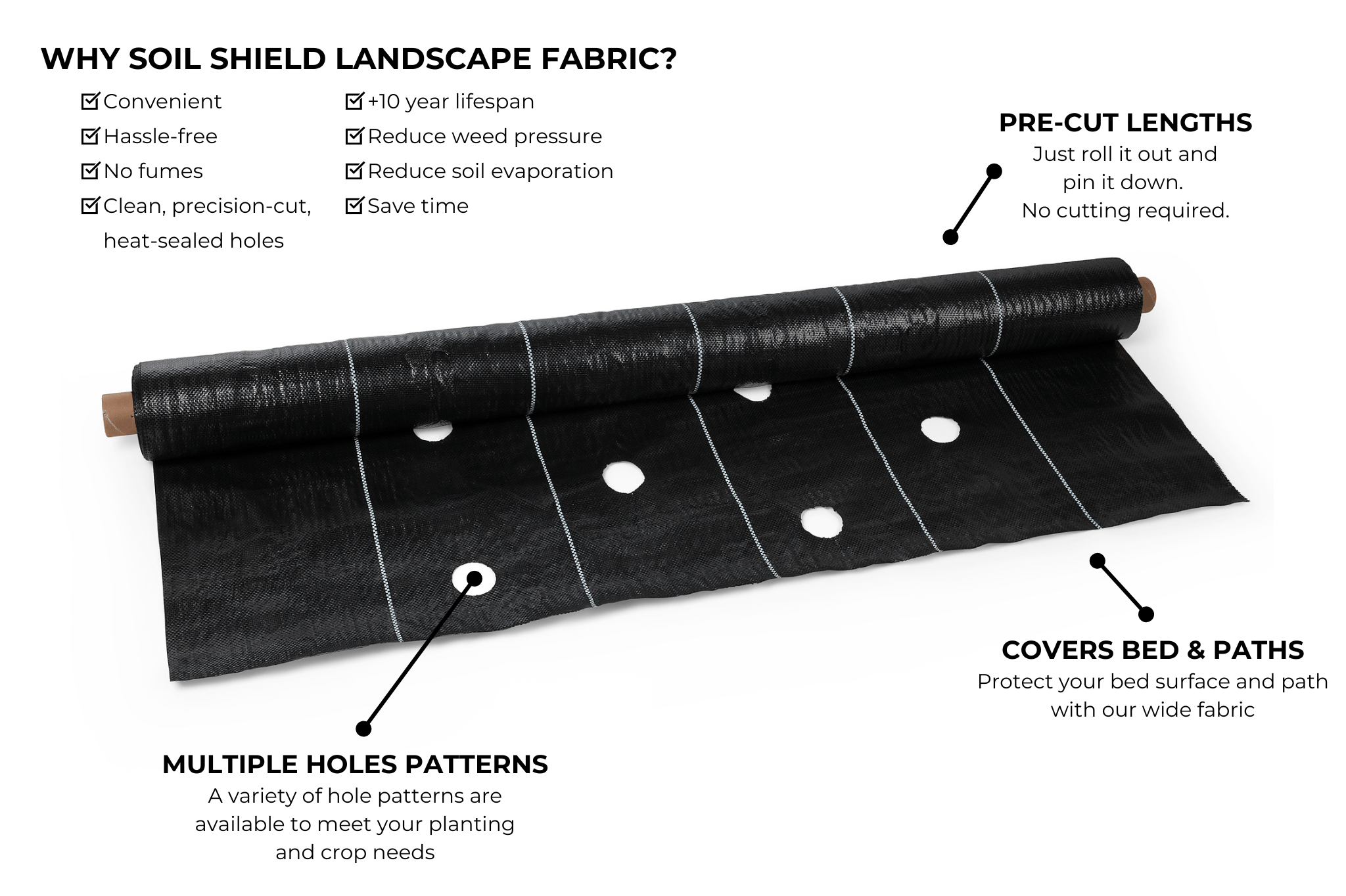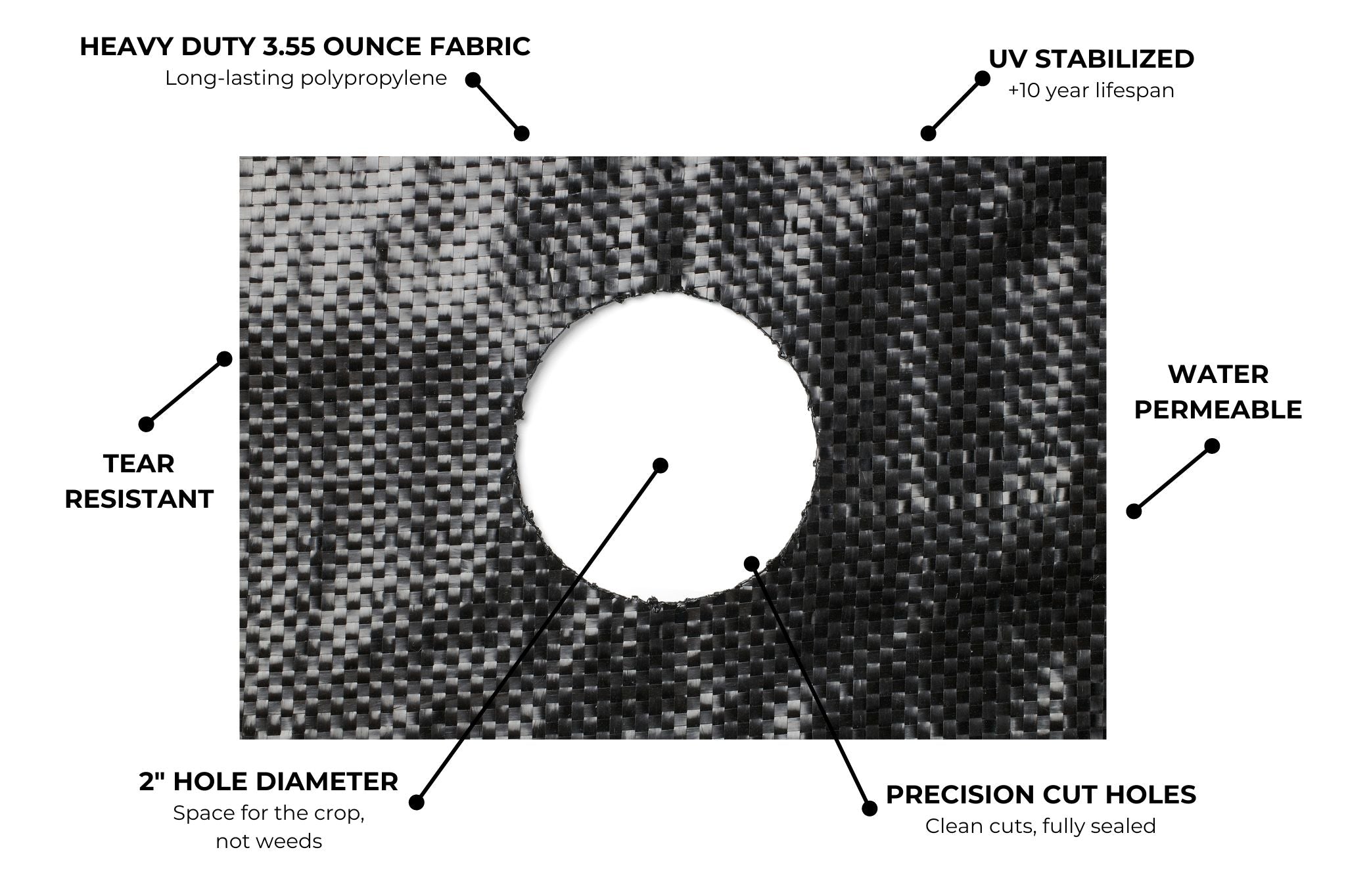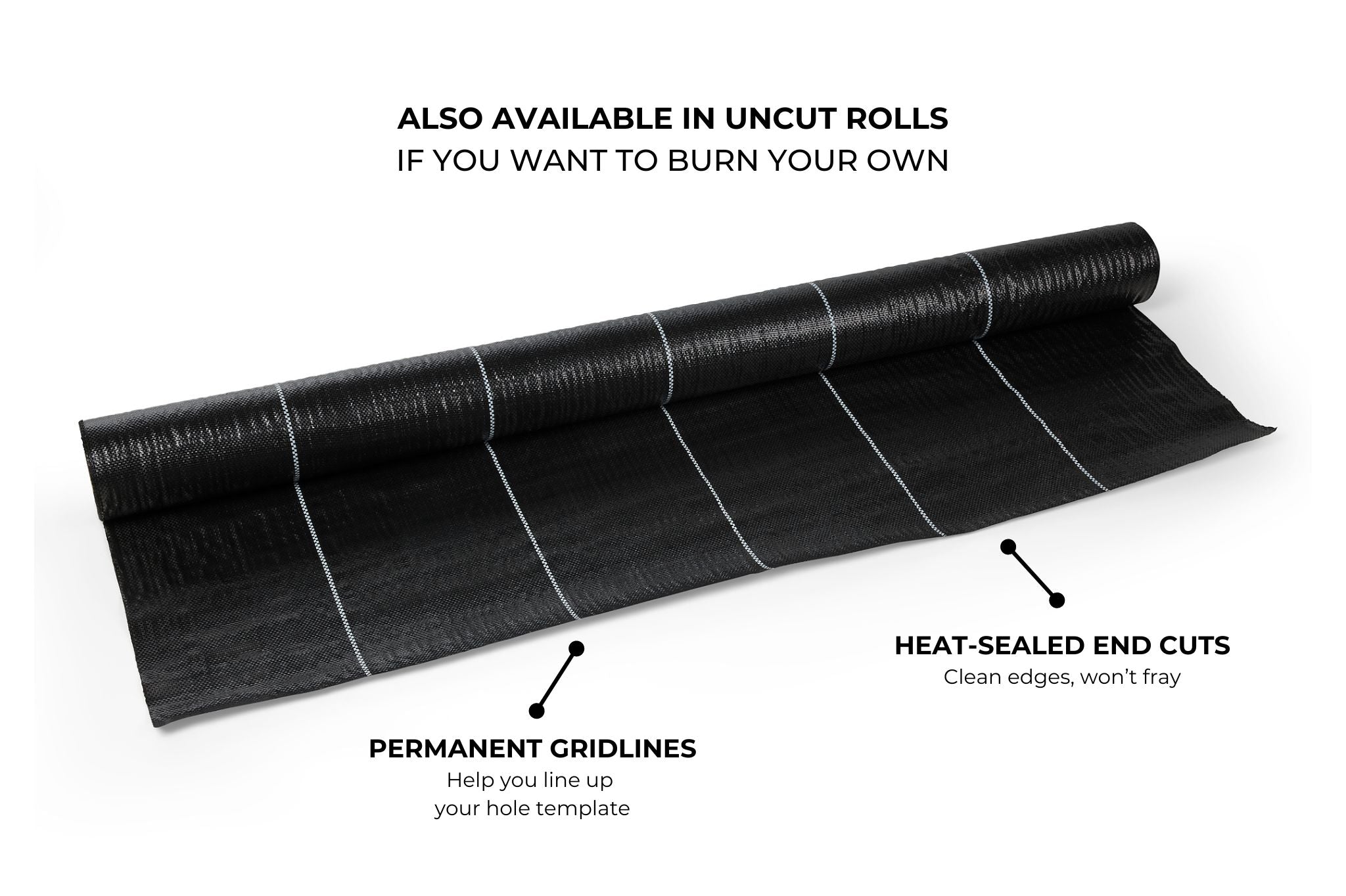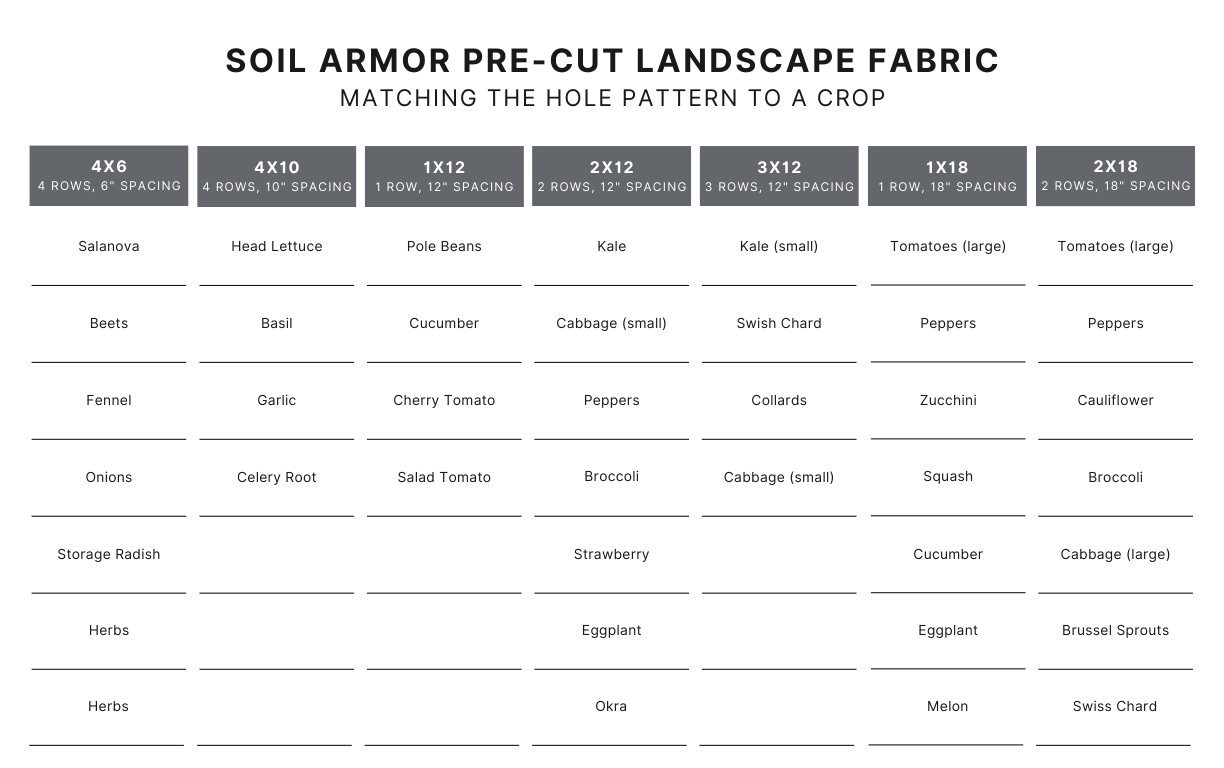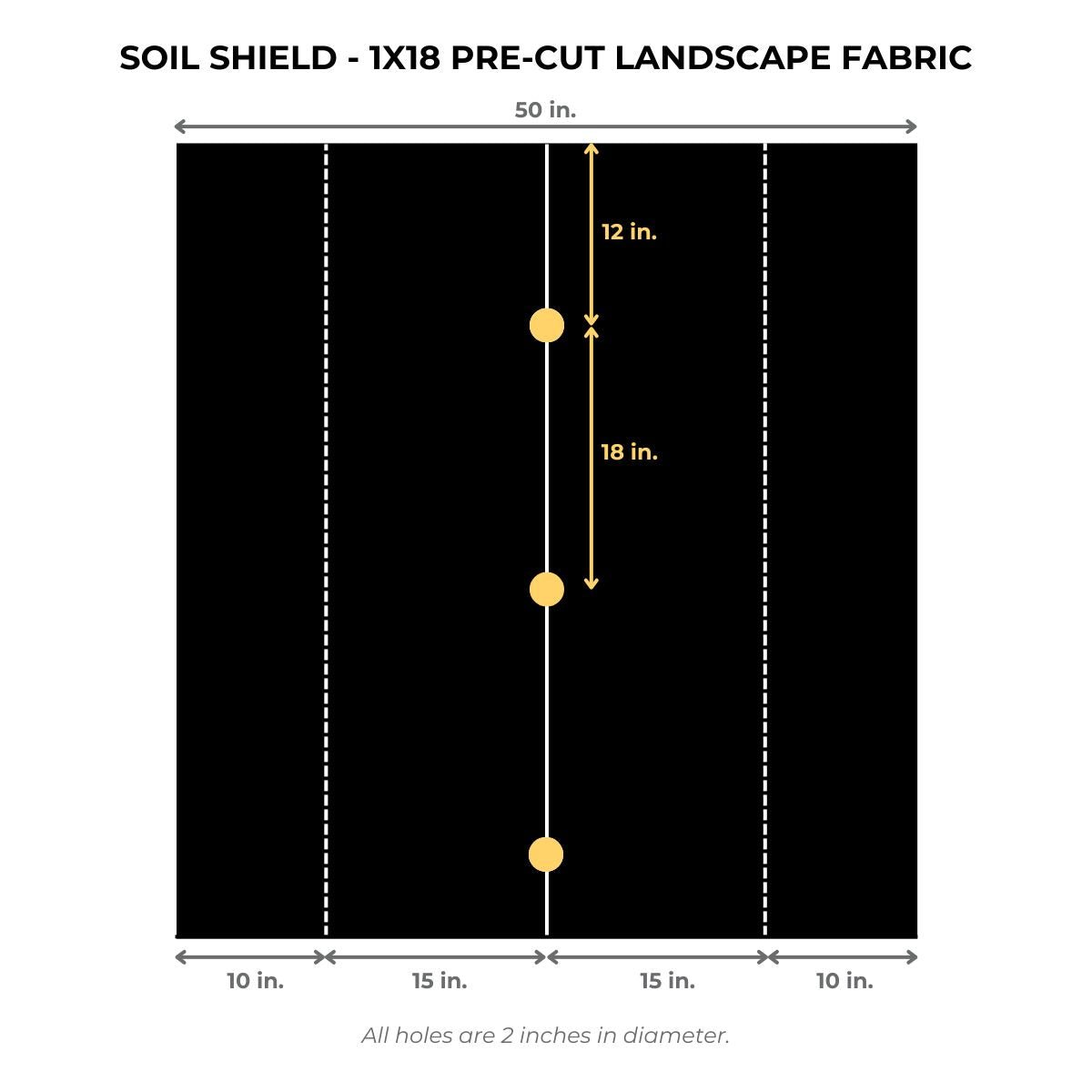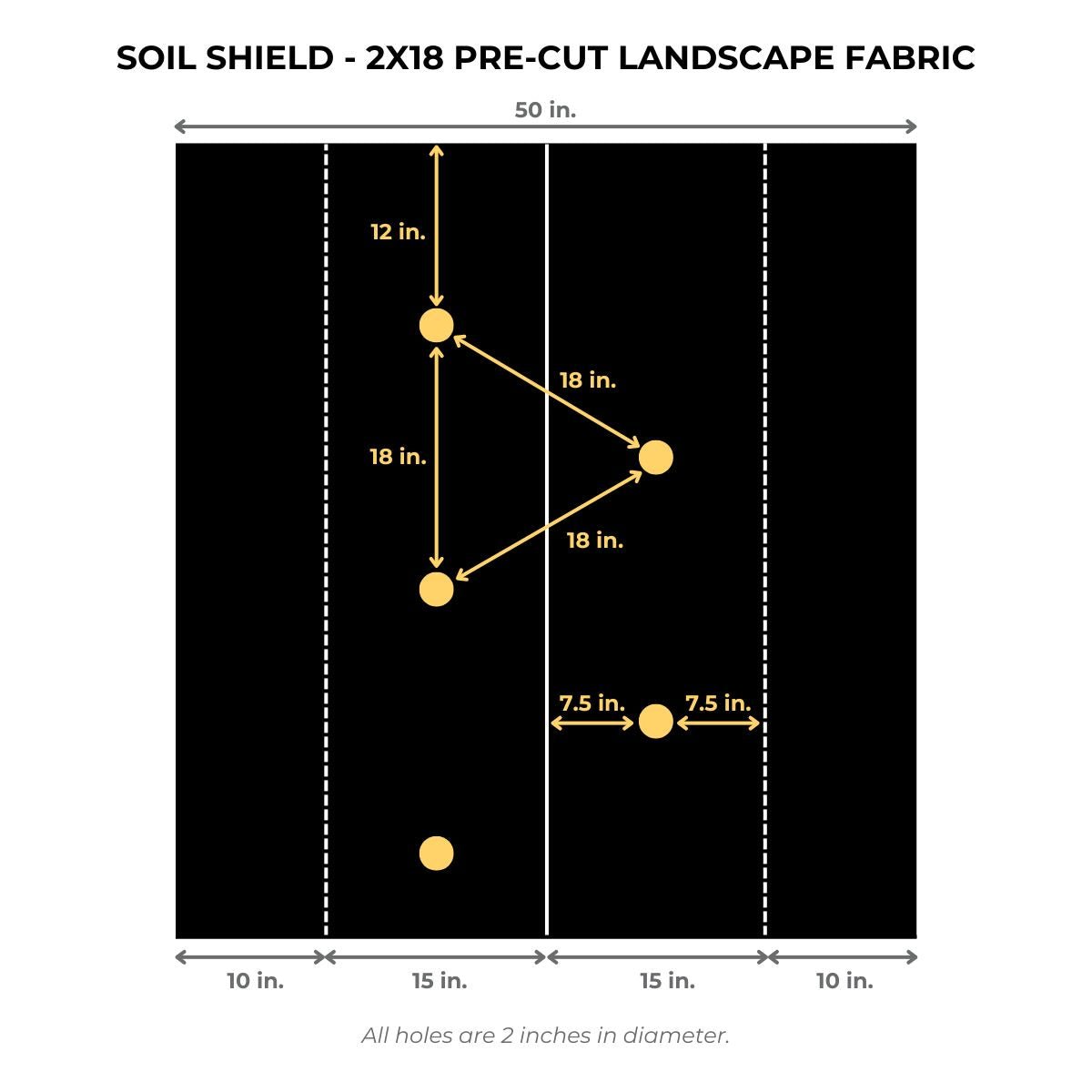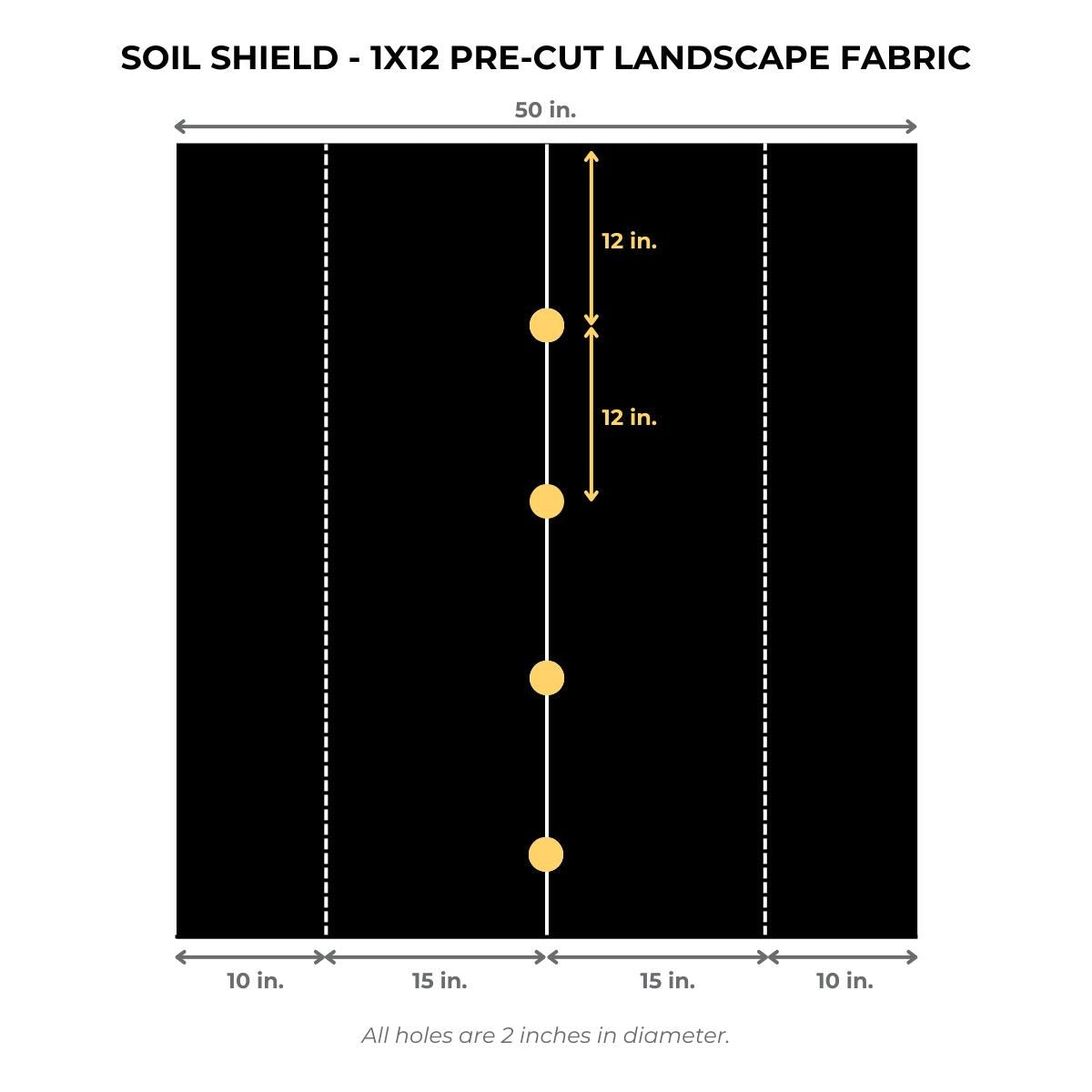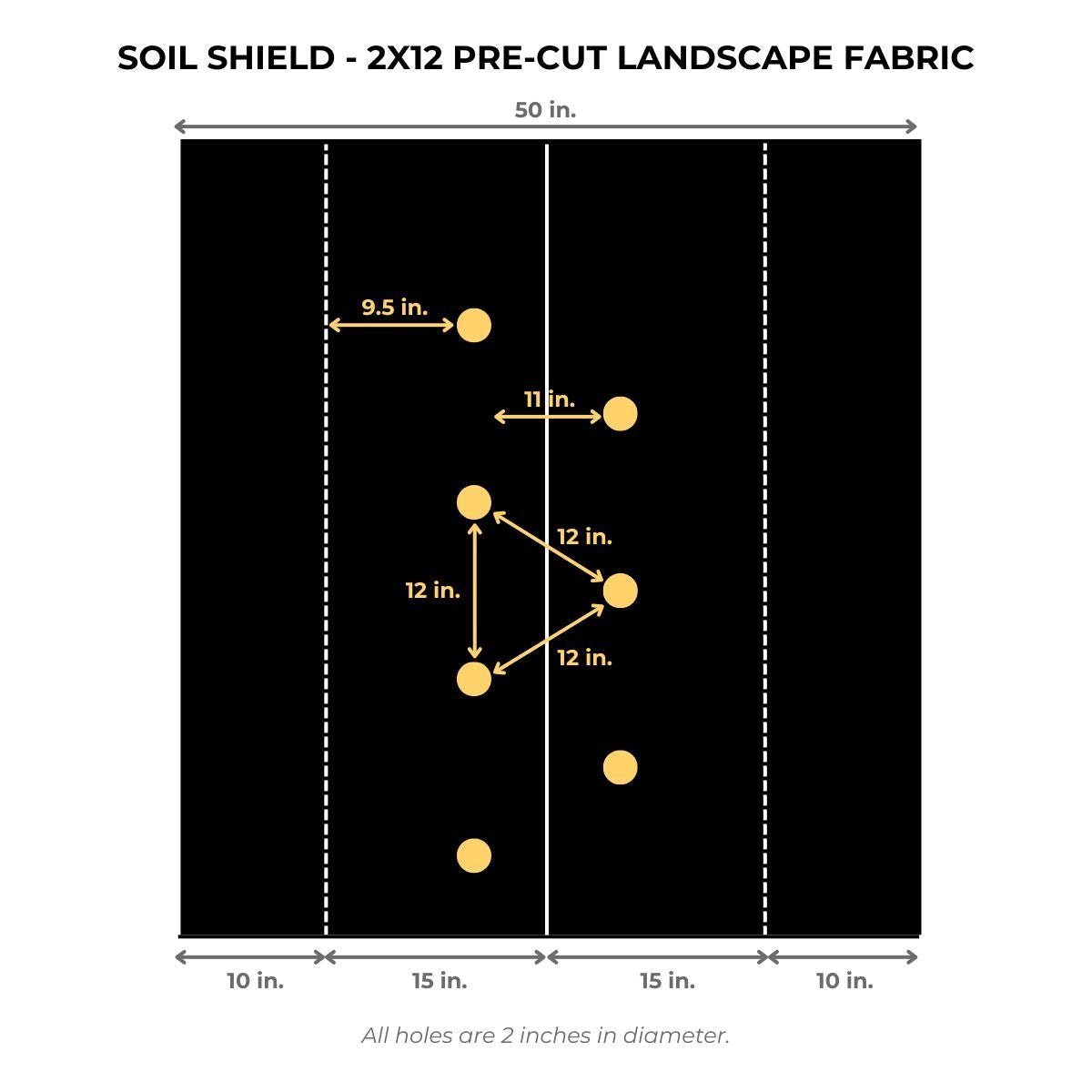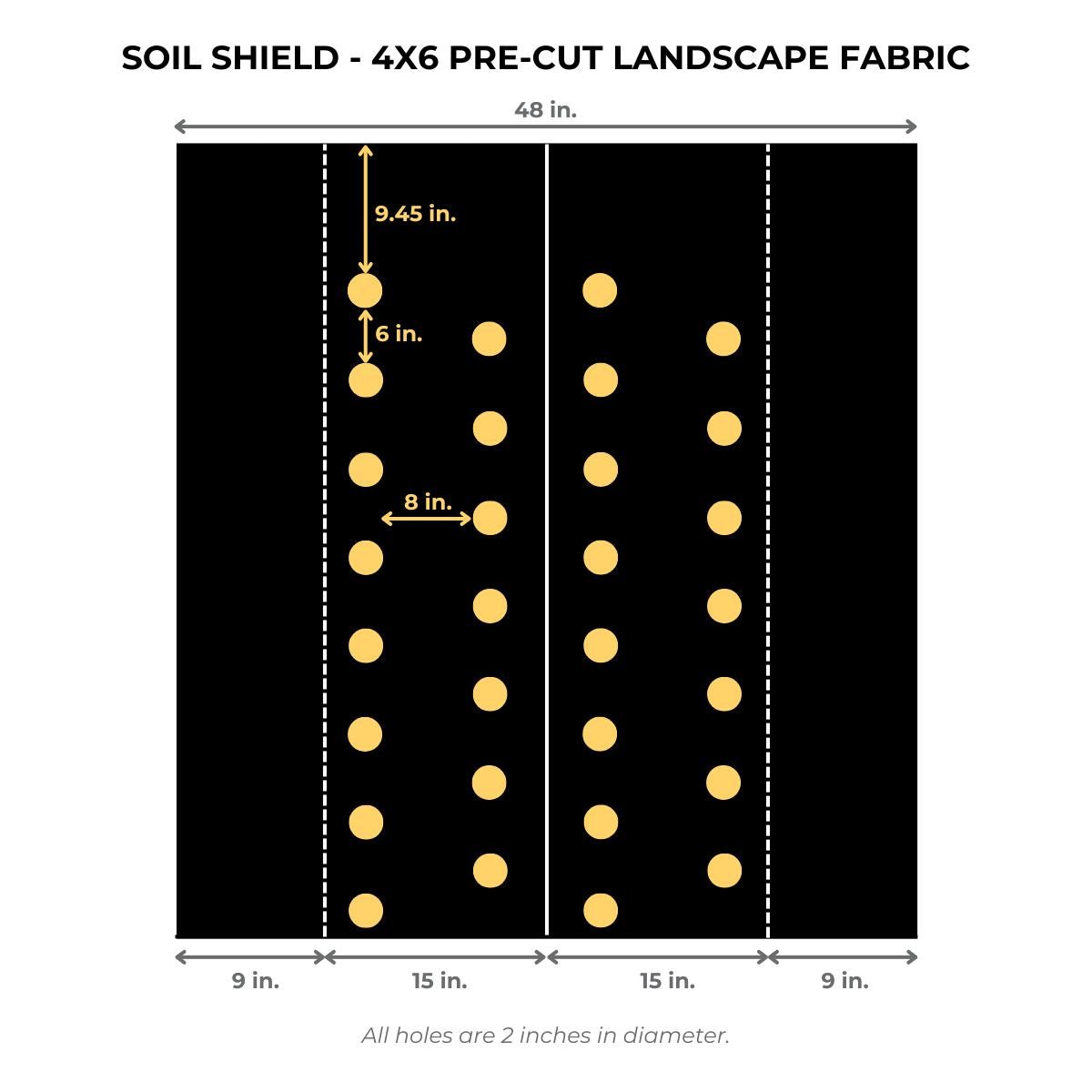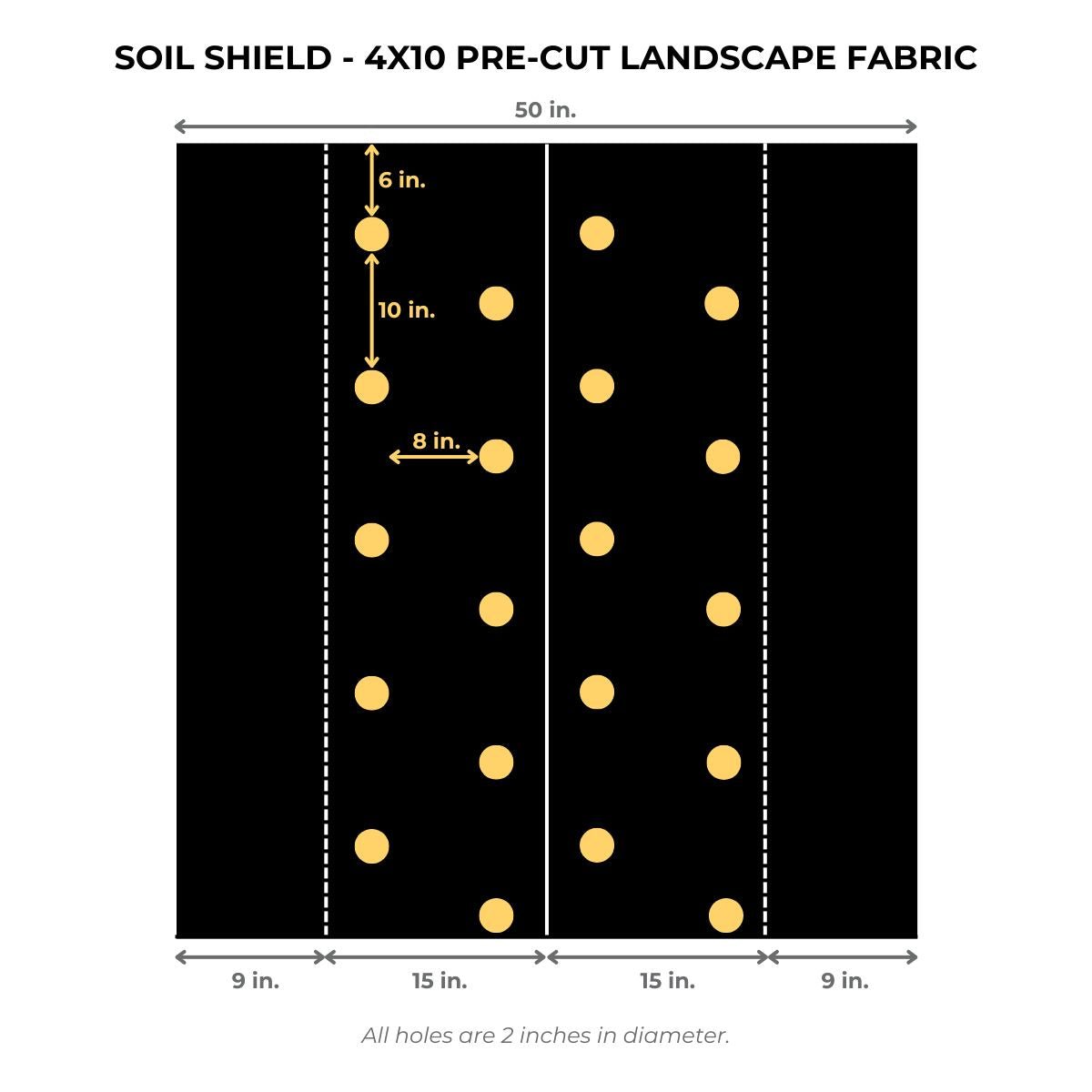- 3.55 ounce woven fabric (stronger than most on the market)
- High-quality, UV-stabilized, polypropylene has +10 year lifespan
- The fabric is water permeable
- Pre-cut 2" give your plant, not weeds, enough room to grow
- Rolls are 48-inch and 50-inch wide to conveniently cover a 30" bed and part of the neighboring pathways
- Precision cut holes are heat sealed
- Note: All landscape fabric will shrink a small amount when first exposed to the sun. Be sure to install the fabric in the field and expose it to the sun at least one week before planting to allow for shrinkage.
Soil Shield Pre-Cut Landscape Fabric
- Regular price
- $75.00
- Regular price
-
$100.00 - Sale price
- $75.00
- Unit price
- per
Couldn't load pickup availability
AT A GLANCE
- Drastically reduce weed pressure without chemicals
- Pre-cut holes make planting easy
- Helps the soil retain moisture
- Pre-cut roles save you the time and hassle of cutting your own
- Precision-cut holes are perfectly spaced and heat-sealed
- +10 year lifespan
- Multiple patterns allow you to find the perfect fit for your crop
-
Note: All landscape fabric will shrink a small amount when first exposed to the sun. Be sure to install the fabric in the field and expose it to the sun at least one week before planting to allow for shrinkage.
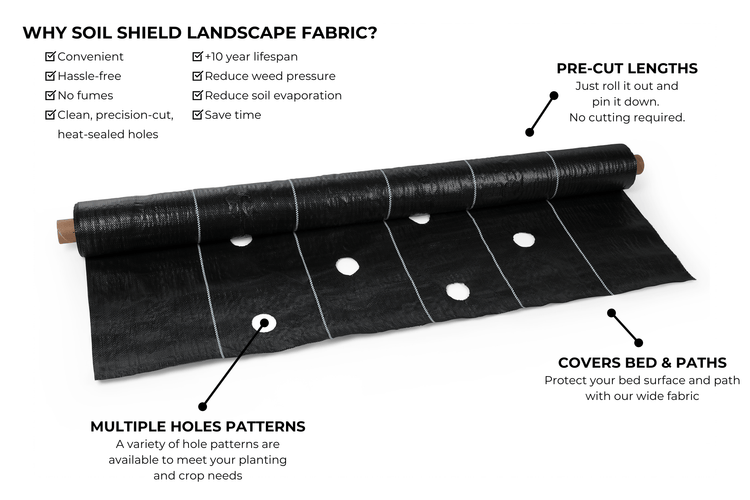
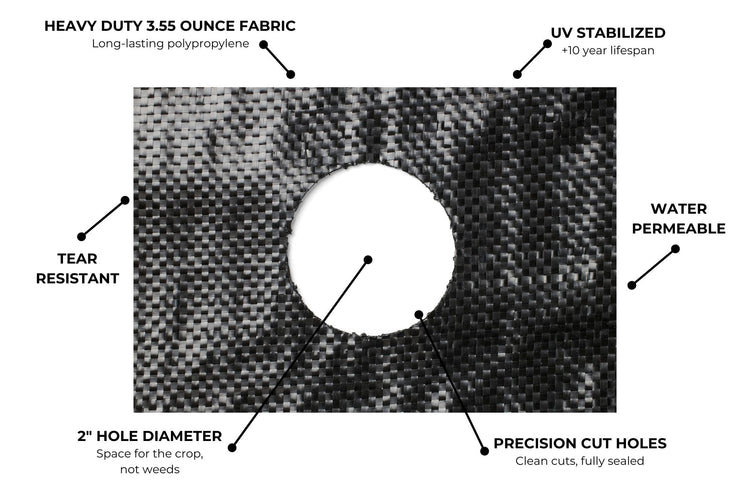
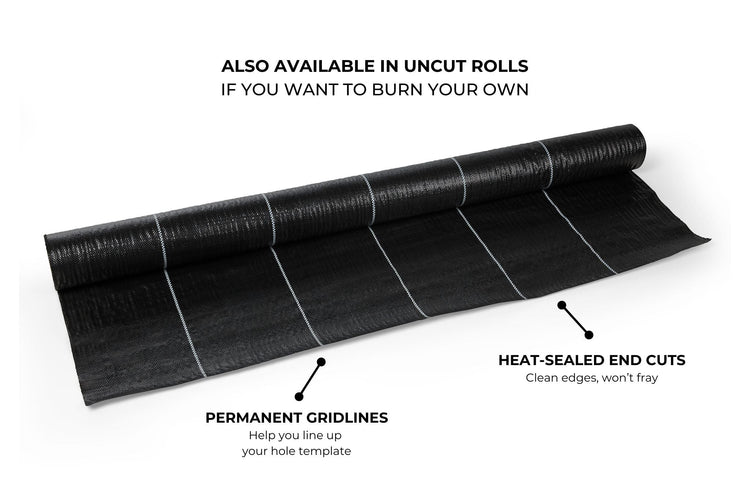
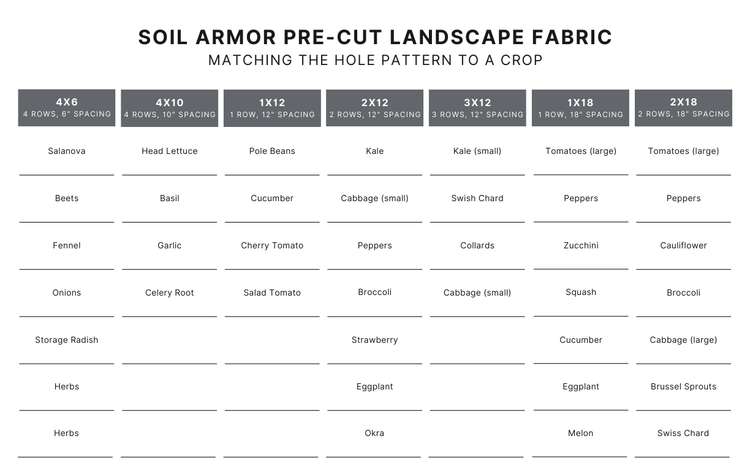
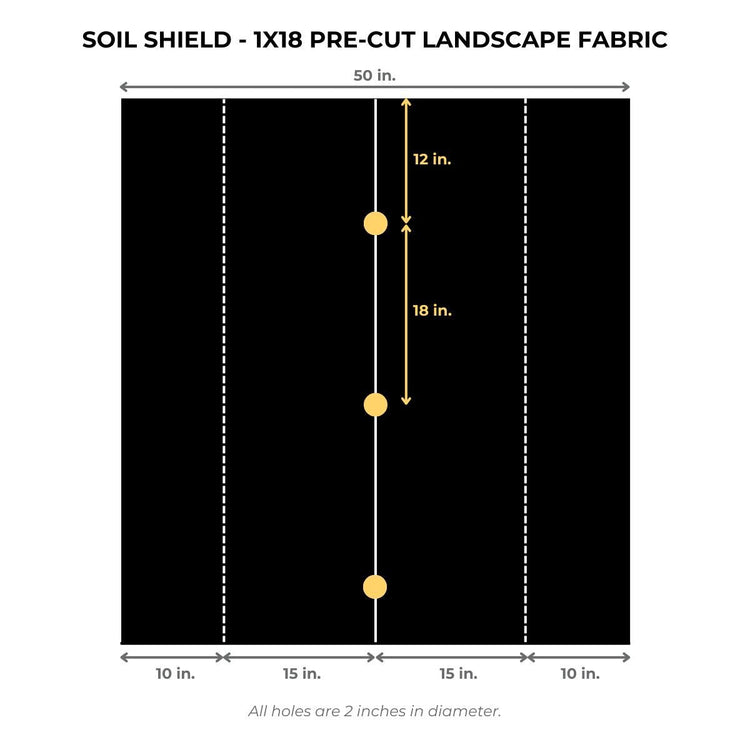
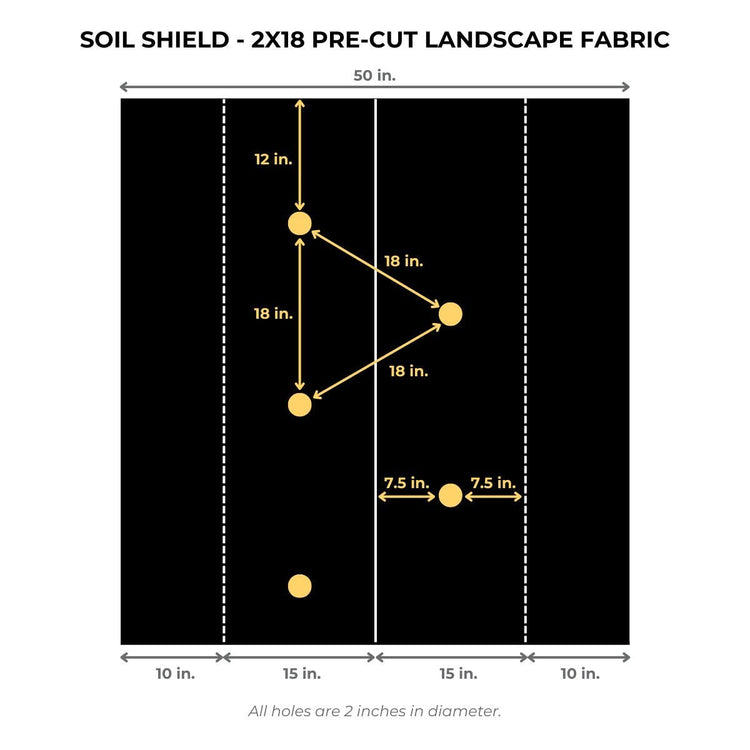
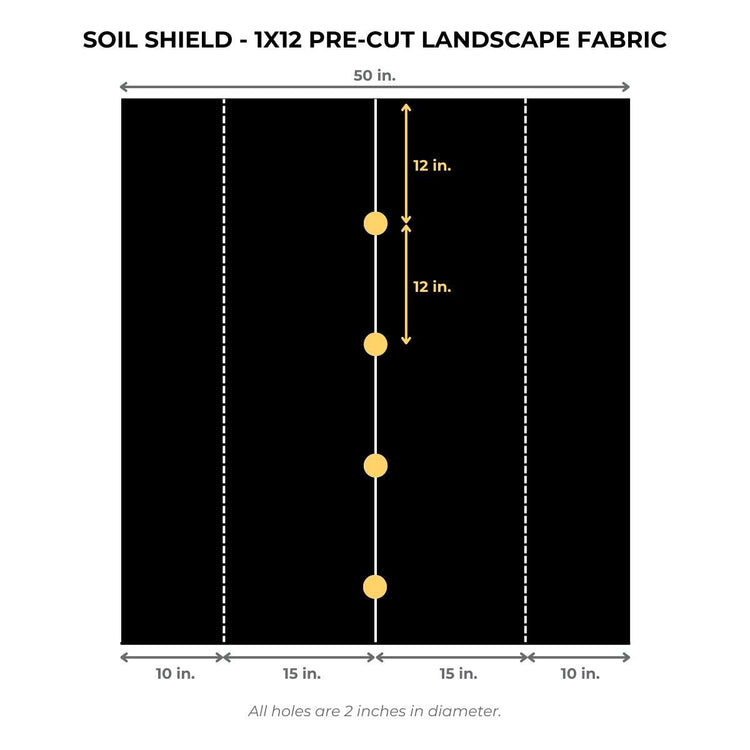
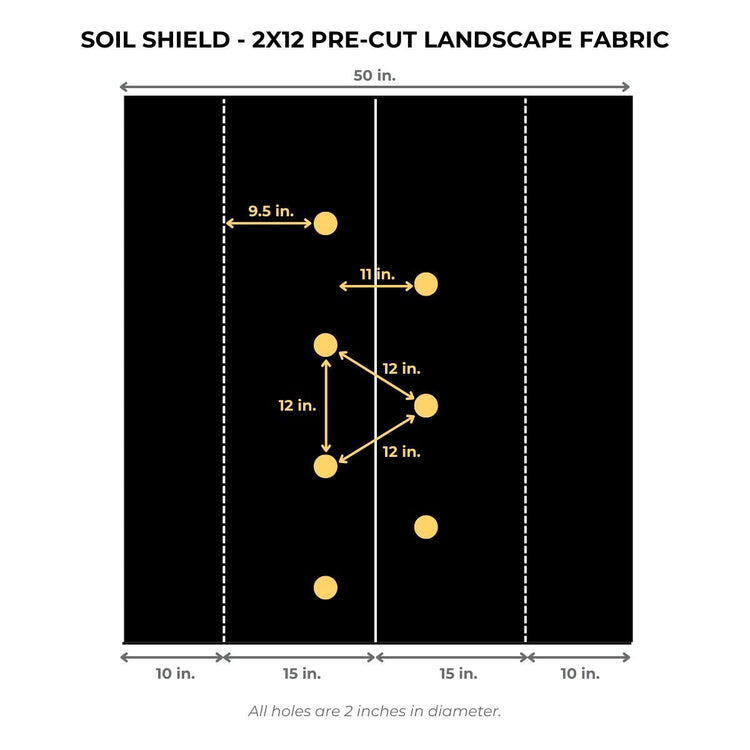
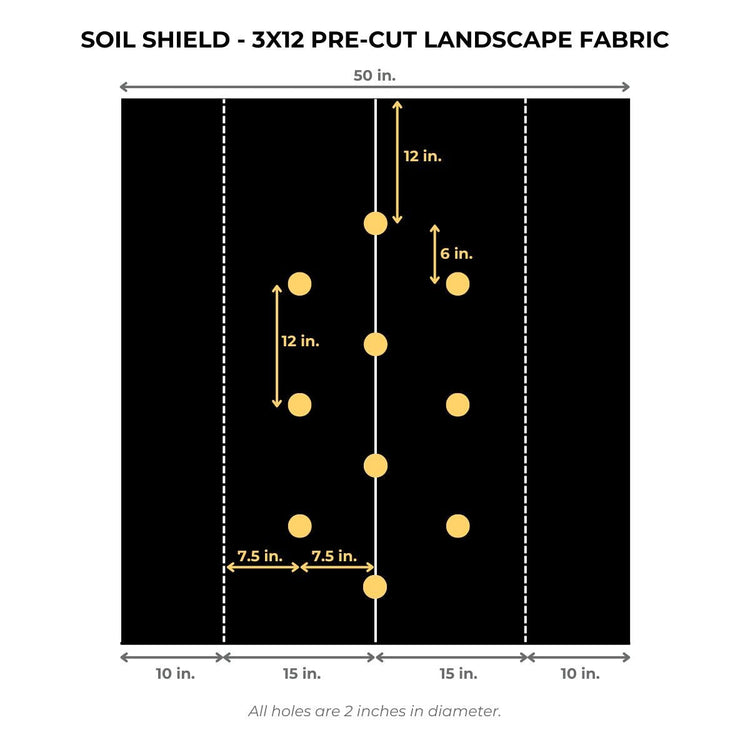
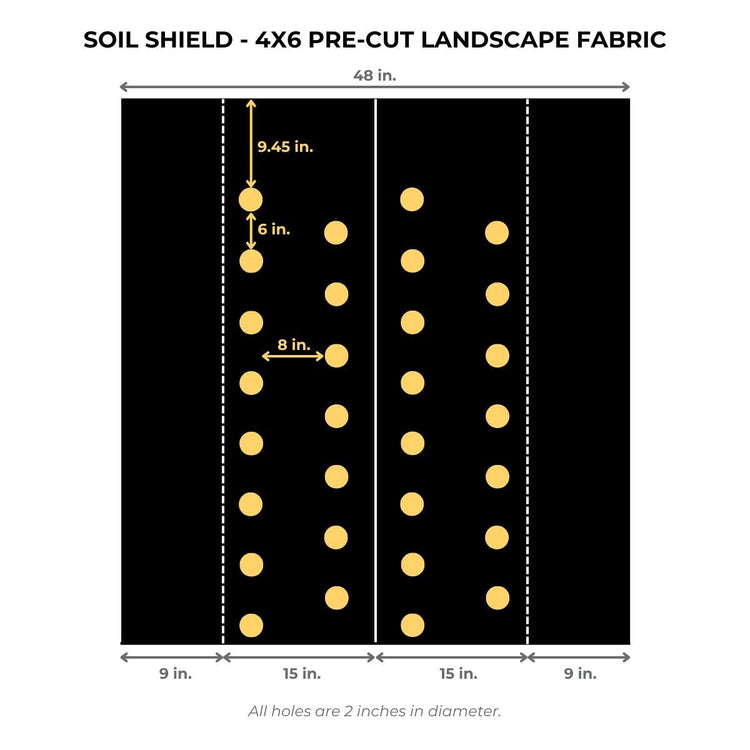
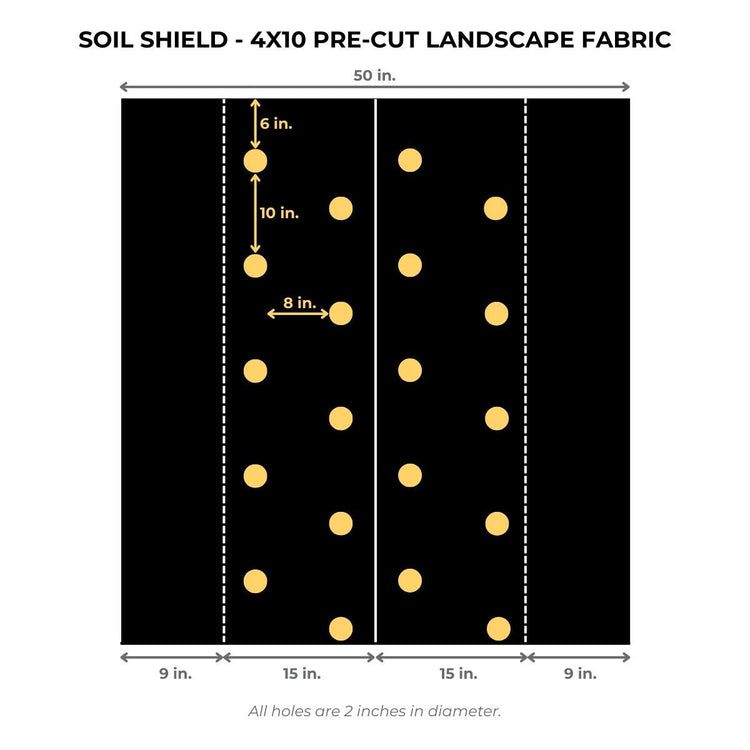
Cart
- Choosing a selection results in a full page refresh.

